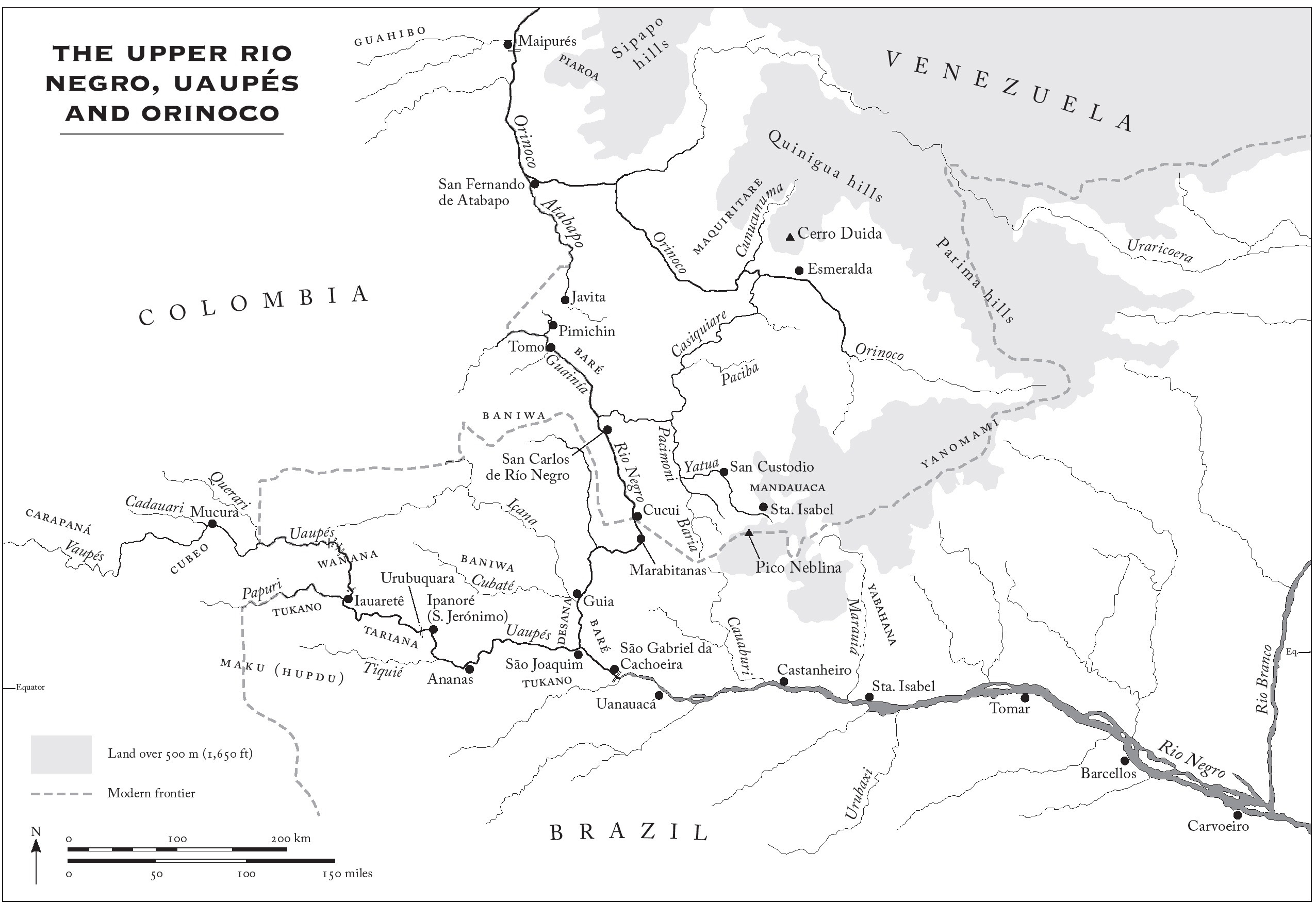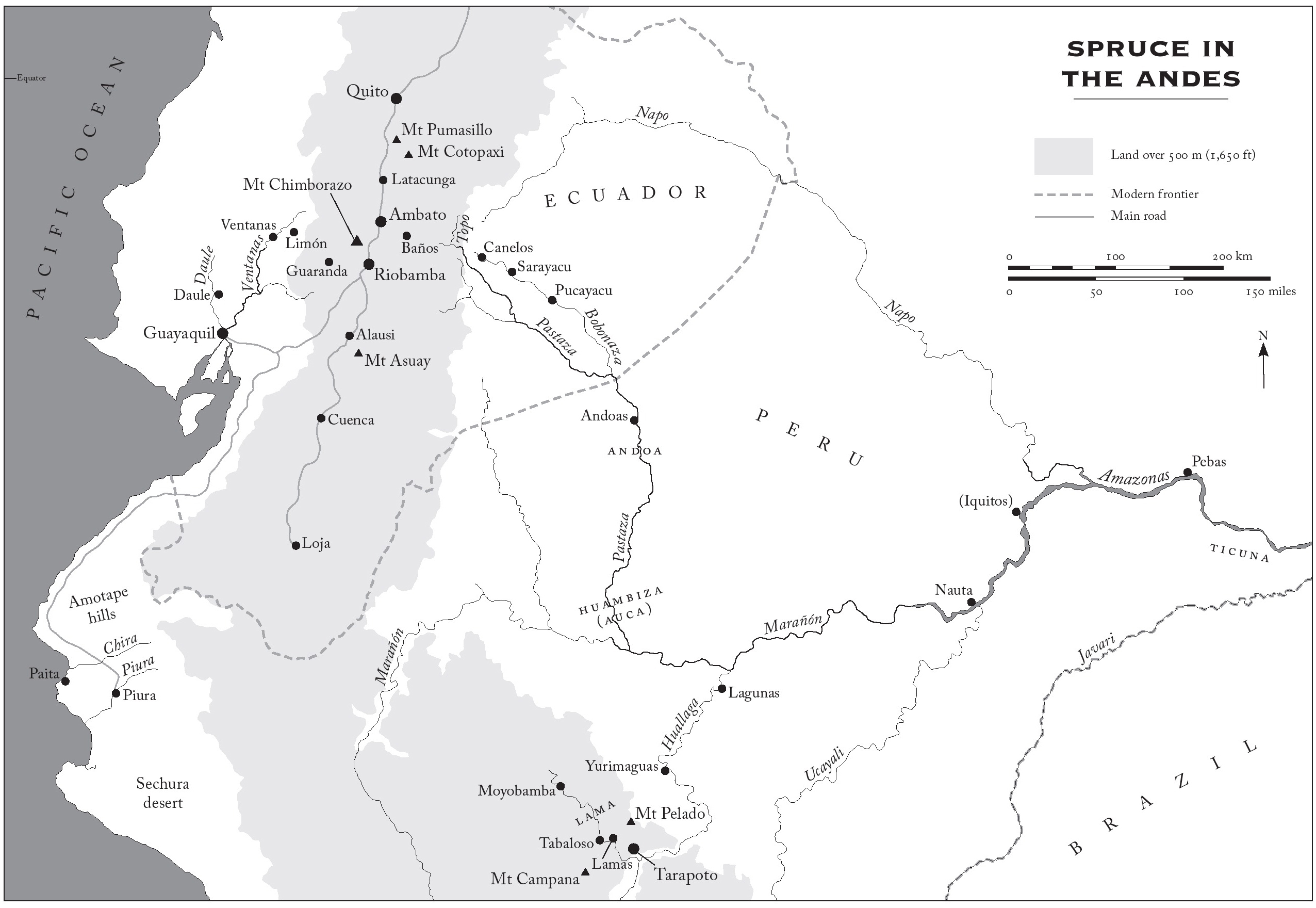
ABOUT THE AUTHOR

John Hemming is a world authority on Brazilian Indians, the Amazon environment, the Incas, Peruvian archaeology and the history of exploration generally. He has travelled in, studied and written extensively about the Amazon region, and has experienced many of the same thrills and hardships as Wallace, Bates and Spruce. He was for 21 years Director of the Royal Geographical Society in London.
Other titles of interest published by
Thames & Hudson include:
Tree of Rivers: The Story of the Amazon
The Great Explorers
The Great Naturalists
Monuments of the Incas
See our websites
www.thamesandhudson.com
www.thamesandhudsonusa.com

Henry Bates collected in forests throughout his eleven years in Brazil. Here he gathers a curl-crested toucan. When the wounded bird shrieked, Bates was mobbed by a flock of its fellows; but they vanished when he killed it.

For my family, Sukie, Bea, Henry and Helena, who have all been with me in Brazil
First published in the United Kingdom in 2015 as
Naturalists in Paradise: Wallace, Bates and Spruce in the Amazon
ISBN 978-0-500-25210-9
by Thames & Hudson Ltd, 181a High Holborn, London WC1V 7QX
and in the United States of America by
Thames & Hudson Inc., 500 Fifth Avenue, New York, New York 10110
Naturalists in Paradise 2015 John Hemming
This electronic version first published in 2015 by
Thames & Hudson Ltd, 181a High Holborn, London WC1V 7QX
This electronic version first published in 2015 in the United States of America by
Thames & Hudson Inc., 500 Fifth Avenue, New York, New York 10110.
To find out about all our publications, please visit
www.thamesandhudson.com
www.thamesandhudsonusa.com
All Rights Reserved. No part of this publication may be reproduced or transmitted in any form or by any means, electronic or mechanical, including photocopy, recording or any other information storage and retrieval system, without prior permission in writing from the publisher.
ISBN 978-0-500-77268-3
ISBN for USA only 978-0-500-77269-0
On the cover: (left to right) Wallace, Bates and Spruce (Bates: Photo Royal Geographical Society/with IBG; Spruce: Royal Botanic Gardens, Kew)
CONTENTS






A NATURALISTS PARADISE

O n 26 May 1848 two young Englishmen sailed into the mouth of the Amazon river and landed at its largest town, Belm do Par (Bethlehem of the Par river). The older of the two, Alfred Russel Wallace, was twenty-five and his friend Henry Walter Bates twenty-three. Both travellers had had only rudimentary education, their families were without wealth or influence, they had very little experience of life outside provincial country towns and neither had any money. But they were passionate about natural history and they had the enthusiasm almost hubris of youth to discover nature in what they knew was its most exuberant environment. They had come to the Amazon hoping to learn more about the origin of species, and they planned to support themselves by selling specimens of its exotic flora and fauna to British museums and collectors.
The young visitors were at first disappointed by the tropical forest. Bates admitted that the vegetation was not so surprising as the glowing picture I had been conjuring up during the tedium of the sea voyage. The number and beauty of the birds and insects did not at first equal our expectations. The few birds on view were small and dull-coloured, as in England. The whole country originally is a lofty uninterrupted and gloomy forest, without flowers and almost without sounds of life. When a birds note disturbs the silence, the echoes startle one in ones solitary walks. Insects are found always sparingly flitting about in rays of sunshine which peer through the foliage. Wallace had read so much about the surpassing beauty of tropical vegetation, and of the strange forms and brilliant colours of the animal world, that I had wrought myself up to a fever-heat of expectation. So his first impression was also disappointment, when he found himself in quiet woods that looked superficially like those of his native country. Newcomers entering their first tropical rain forest still react as Wallace and Bates did.
The two Englishmen were, however, good naturalists. They soon appreciated where they had been deceived, realizing that they were seeing disturbed woods near a town, and at the extreme eastern edge of the endless mass of Amazon vegetation. They found that a forest that seems empty and lifeless at midday erupts into life at dawn and dusk. With more experience, they learned that much animal life is nocturnal, that many insects and birds are bafflingly camouflaged, and that the majority of natural life thrives in the canopy far above human heads. Before long, Bates was writing that the forest scenery is glorious beyond imagination: in some places every fifth tree is a palm, shooting up slender stems to a great height, and suspending their feathery leaves amongst the branches of still loftier trees. The leafy crowns of the trees, scarcely two of which are of the same kind, were now far away above us, in another world as it were. We could only see at times, where there was a break above, the tracery of the foliage against the clear blue sky. Below, the tree trunks were linked by a tangle of lianas, twisted like cables, contorted into every variety of shape, entwining snake-like round the tree trunks, or forming gigantic loops and coils others of zigzag shape, or indented like the steps of a staircase, sweeping from the ground to a giddy height.
Bates was an entomologist at heart and even in the town itself he had the treat of seeing a great variety and number of handsome things flashing about. On one walk, there were cassia trees with elegant pinnate foliage and conspicuous yellow blossoms, and clusters of arborescent arums, while over the whole fluttered a larger number of brilliantly-coloured butterflies than we have yet seen; some wholly orange or yellow (Callidryas [now Phoebis]), others with excessively elongated wings, sailing horizontally through the air, coloured black, and varied with blue, red, and yellow (Heliconii). One magnificent grassy-green species (Colaenis Dido [
Next page



















